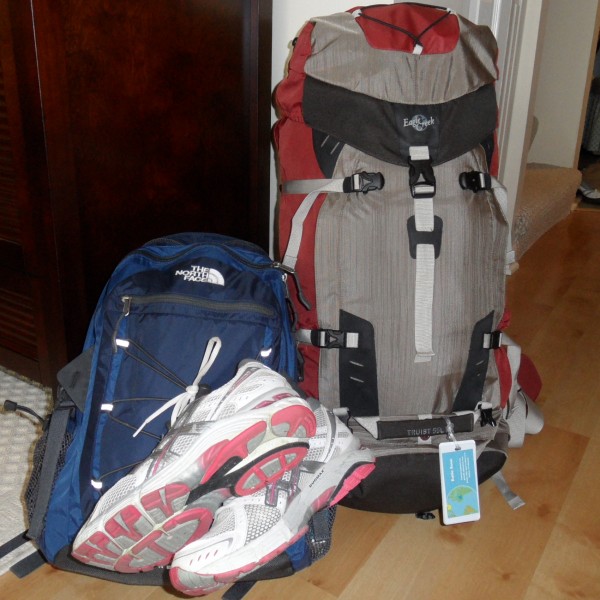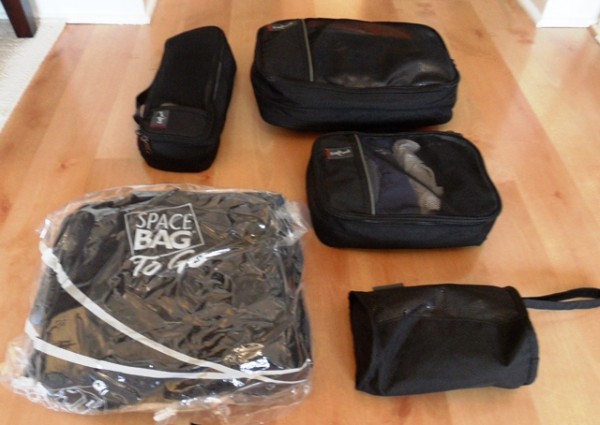How to Pack for Your Career Break
 If you are just starting to think about taking a career break, you may not even be thinking yet about what to pack. But the time will come when that is priority – and struggle – number one. Here are some of our best tips to pack for your career break travels.
If you are just starting to think about taking a career break, you may not even be thinking yet about what to pack. But the time will come when that is priority – and struggle – number one. Here are some of our best tips to pack for your career break travels.
1. Pack Only What You Can Carry
Whether you go with the traditional backpack or a wheeled suitcase, you will be carrying all of your worldly possessions with you from city to city, country to country.So you will want to only pack what you can carry. One way of limiting what you bring is to get a smaller backpack or suitcase. If you get the biggest possible backpack available, chances are you will be tempted to pack it full right away. If you are limited in size, you will be forced to really evaluate what you are bringing. Plus, you’ll want to leave room for all the souvenirs you might want to buy!
In addition, airlines are now charging for overweight bags. This is especially true for smaller, internal flights. That’s just another added expense that you won’t want chipping away at your budget.
When packing it’s extremely useful to lay out everything you plan to bring. By visually seeing everything together, you can step back and evaluate what you truly need. The general formula is to take just half of what you originally planned.
2. Dress in Layers and Neutral Colors
No matter where you travel, there is a good chance you will experience multiple climates – even in the same day! Dressing in layers is a great way to be prepared for any moment. It is also smart to layer and wear your bulkiest items when you’re flying.
Dressing in neutral colors also allows you to mix and match multiple items in your limited wardrobe.
Those who are new to long-term travel may find that one of the biggest challenges up front is the clothing issue, or lack thereof. But keep in mind that as you will be living on the move, chances are most people won’t know that you are wearing the same things every other day. And more than likely, so are they! Not to mention, it can be refreshing not to worry about what to wear each day – with just a couple options, it is one less decision to make!
3. Evaluate What’s Most Important To You
While you generally want to pack light, you also need to weigh potential extras that may be of particular importance to you. For example, if you are a budding photographer, you likely won’t want to travel without your various cameras and lenses. For you, that extra weight will be worth it, even if it means our daypack is as heavy as your main pack or suitcase.
Likewise, if you’re an avid diver, you may want to bring your own diving equipment. A fervent runner? You’ll want your running sneakers for sure. Or maybe you are going to do a lot of hiking and want to bring your walking sticks.
Also think about what you will actually be comfortable wearing – don’t go out and buy a bunch of technical clothing if you aren’t likely to wear it. And while people may tell you to stay away from jeans, if that’s what you’re comfortable in, go for it!

4. Use Packing Cubes for Separating Gear
The last thing you want while traveling is an “exploding” backpack or suitcase – you don’t want to find yourself removing everything while digging through your pack just to find one particular item. This can be extremely frustrating, especially if you are on a train or on your way out.
Keep your backpack or suitcase in order by separating your gear in individual packing cubes. Packing cubes are made of nylon and mesh and come in multiple shapes, sizes and colors, making them the perfect way to stay organized! If you need a new t-shirt, you know which cube to grab. Even if it’s placed at the bottom of your pack, you only have to remove two or three items to get to it. You can use separate cubes for just about everything – shirts and bottoms, underwear and socks, even toiletries and electrical/tech accessories.
A key to packing in packing cubes is to roll your items – this saves space and keeps items somewhat wrinkle free. Cubes also make it easier to repack. It won’t take long for you to figure out the best configuration for items in your backpack or suitcase and it will soon become automatic.
5. Keep Toiletries Light
Toiletry items can easily become the heaviest part of your backpack, so it’s best to try and keep them to a minimum. One way to do this is to only pack what you need for the immediate weeks. You can easily pick up most items like shampoo, soap and toothpaste con the road, so starting off with smaller sizes is a great idea. Plus, if you pack a large shampoo bottle, the bulk of it will still take up more space even as you use it up. You might also consider shampoo bars from Lush, an all-natural cosmetics company – they are compact and long-lasting!
Some items of your toiletry bag that may be more difficult to find overseas. If you wear contacts, you may want to bring extra lens solution as that may not always be available. And women may have a hard time finding feminine hygiene products in other countries – especially tampons. Unless you are comfortable with OB-type products, you will want to pack extra tampons.
In addition to any travel medications you might be on (such as malaria pills) perhaps you have a regular prescription for something. You will want to make sure you have enough of it to get through the trip. It is very important that you bring your doctor’s prescription with you as well.
Another item that will take up a lot of space in your backpack is a traditional bath towel. Instead, use an ultra light towel! They are small, lightweight, soak up water in an instant, and dry super fast. And if you are worried about a towel for the beach, use a sarong! Again, these are small and lightweight and can even be used as a wrap if you find yourself using a communal bathroom.
6. Pack For the Immediate
If you plan to be in various climates during your extended travel, pack for your most immediate. Warm destinations obviously require lighter clothing than cold weather destinations so you won’t want to be lugging around down coats and boots while in the tropics. Likewise, if you’re starting in a colder climate, consider donating your cold weather gear to a local charity before moving on to warmer weather. If you really want to hold on to an item, simply ship it home. The extra space will make it worth the cost!
And not to sound like a broken record but you can always pick up necessary items when you get to your destination.
7. Be Culturally Sensitive
It’s important to keep in mind the local cultures in the countries you’re visiting – you are a guest in their country and you should be respectful. Sure, Thailand is hot, but they are a very conservative country in the way that they dress. You won’t see many Thai people in skimpy tops and shorts. You can certainly dress this way, but be prepared to attract unwanted attention and don’t expect to enter temples dressed that way. Make sure you have a top that covers your shoulders and long pants or, for women, a skirt below the knees.
Other Quick Tips
? Don’t bring anything that needs to be dry cleaned.
? Dry-fit clothes are great items as they breathe, dry fast, and don’t wrinkle.
? Fabric softener in your pack is a great way to freshen up your wardrobe.
? Are you a runner? Deodorant balls can be great for keeping sneakers from smelling up your pack.
Don’t Leave Home Without:
? Extra passport photos (you never know when you’ll need them for visas)
? iPod (great for listening to travel podcasts and keeps you company on long road trips)
? Water bottle (hydrate, hydrate, hydrate!)
? Straps and carabiners (great for strapping/attaching extra things to your pack)
? Dry bags (great for keeping valuables such as cameras and computers safe when on or near the water)
? Plastic bags (great for separating items in your pack, especially wet items)
? Headlamp (see Our Favorite Gear entry)
? Journal (you’ll regret in the future not documenting this incredible passage in your life)
? Camera (no explanation needed)
? Photos and/or postcards from home (a great way to share your culture and life with the people you encounter)






